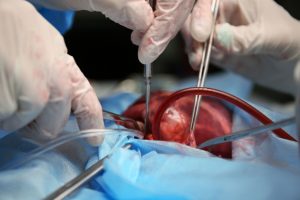The use of rodents in preclinical studies has contributed greatly to our understanding of the pathophysiology of chronic neuropathic pain. These animal models are limited because of their poor clinical translation. We developed a pig model for chronic pain caused by surgically induced peripheral neuritis trauma (PNT). Seventy-five percent of the animals exhibited mechanical and tactile allodynia, which are indicative of painful neuropathy, by day 28 after surgery. Importantly, the PNT-injured pigs retained their ability to walk or to stand on their injured leg. Messenger RNA analysis of acute inflammatory cytokines calcitonin gene-related peptide and brain-derived neurotrophic factor at the site of injury suggests transient inflammation followed by a persistent high level of neurologic markers. Gabapentin and morphine effectively inhibited hypersensitivity to von Frey filaments and to feather stimuli, and reversed spontaneous pain-related behavior in a dose-related manner. No analgesic effect was detected in PNT-injured pigs after treatment with aprepitant, similar to observations in humans and contrary to observations in rodents. In conclusion, PNT-induced trauma in pigs may comprise a valid preclinical model for the study of the chronification of peripheral nerve injury and for the study of new pain therapies.







